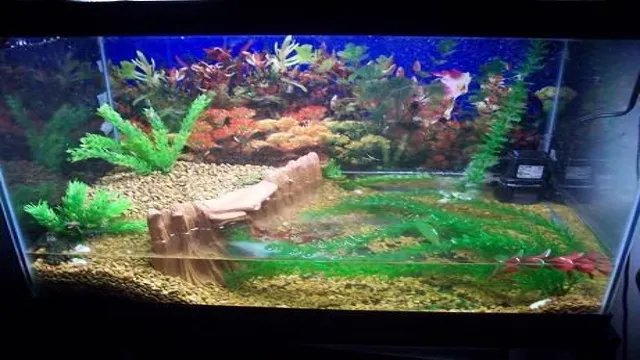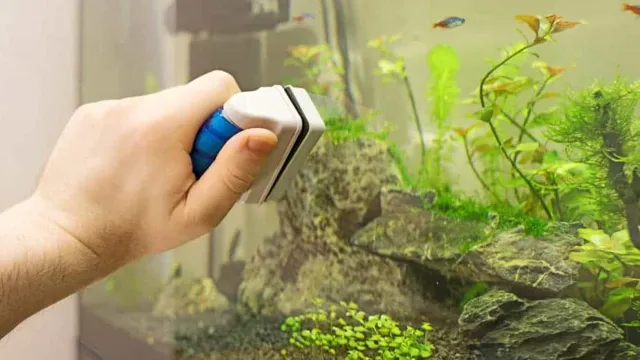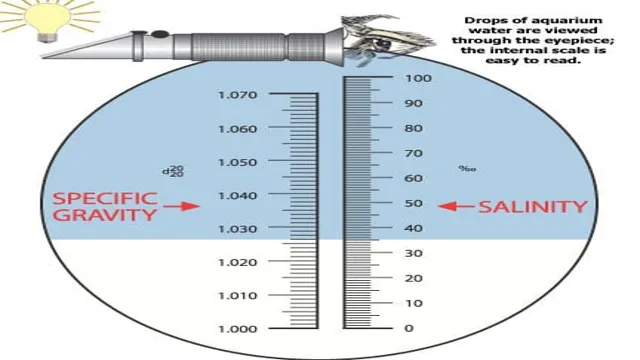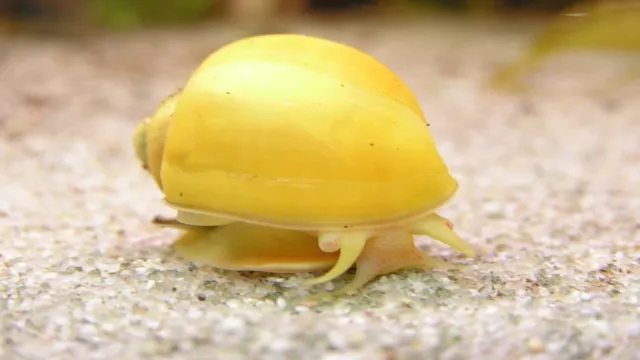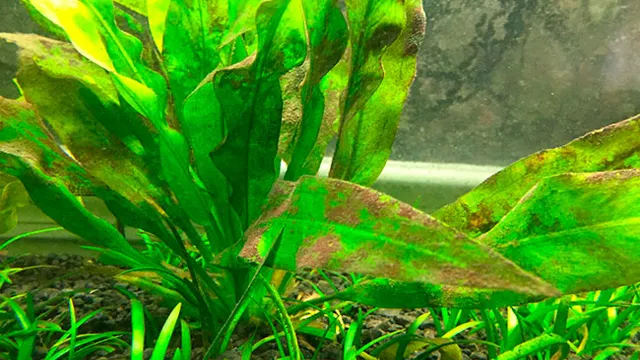Have you ever thought about setting up a toad habitat in an aquarium? These cute little creatures can make for fascinating pets, with their unique personalities and behaviors. Plus, creating an aquatic environment can be a rewarding and challenging experience for any pet owner. But before you dive in, there are some important things to consider when creating a habitat for your toad.
In this blog post, we’ll cover everything you need to know about setting up a toad habitat in an aquarium, including the type of aquarium you’ll need, the proper substrate, temperature and humidity requirements, lighting, and more. So, let’s get started and create a home your toad will love!
Choosing a Suitable Aquarium
If you’re interested in creating a toad habitat in your aquarium, there are a few things you need to consider before getting started. Firstly, you need to make sure that you choose a suitable aquarium size, as toads require plenty of space to move around in. A small aquarium can be stressful for your toad and can lead to health problems in the long term.
Secondly, you need to ensure that your toad has access to both water and land areas within the aquarium. This can be achieved by using a combination of substrate, rocks, and plants to create a suitable environment. Finally, it’s important to choose the right type of toad for your aquarium setup.
Different species have different requirements, so research is crucial. Overall, creating a toad habitat in your aquarium can be a rewarding experience, but it’s important to do your research and make sure that you’re providing the right conditions for your new pet.
Size and Dimensions
When it comes to selecting an aquarium for your fish, size and dimensions are important factors to consider. The size of your tank should be appropriate for the number and size of fish you plan to keep. A larger aquarium means more room for your fish to swim around, which can lead to happier and healthier fish.
Additionally, the dimensions of your tank will affect the type of fish and plants you can keep. For example, a taller tank may be suitable for fish that like to swim up and down, while a longer tank may be better for species that prefer to swim horizontally. It’s important to do your research and determine the needs of the fish you want to keep before choosing an aquarium.
By selecting the appropriate size and dimensions, you’re giving your fish the best chance for a long and healthy life.
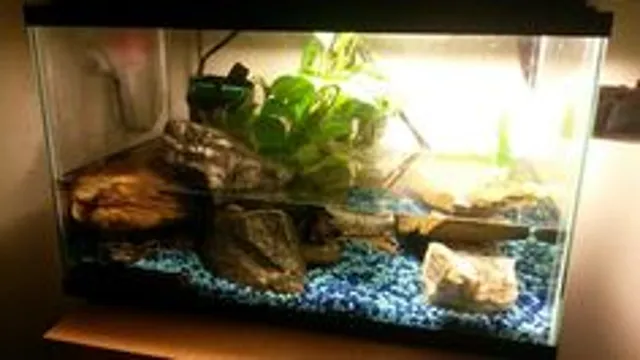
Materials and Cover
When it comes to setting up an aquarium, one of the most important decisions you’ll need to make is choosing the right materials and cover. The type of material you select will depend on the type of aquarium you wish to create and the fish that will be living inside. Glass aquariums are the most popular choice due to their transparency and durability.
However, acrylic aquariums are lightweight, durable, and offer better insulation. You will also need to select the right cover material to prevent your fish from jumping out of the aquarium. There are a variety of cover options, such as glass tops, mesh covers or hoods, and custom built-in covers.
It’s important to choose a cover that will provide ample ventilation while still preventing your fish from escaping. Ultimately, the materials and cover you select will have a significant impact on the overall aesthetic and functionality of your aquarium, so it’s important to consider all options carefully.
Adding Substrate and Water
When it comes to setting up an aquarium, choosing the perfect one is key. You need to consider the type of fish you plan on keeping and how much space they need to live comfortably. The size of your aquarium will also depend on the available space in your home.
Once you’ve chosen the right aquarium, it’s time to add the substrate and water. Picking the best substrate will depend on the type of fish you have. Sand is a popular choice for many fish as it mimics their natural environment, while gravel is better for the filtration of waste.
Make sure to add enough water to cover the substrate and to leave enough room for the fish to swim around. Keep in mind that some fish require specific water conditions, so it’s important to test the water before adding any fish to the aquarium. With the right aquarium and setup, your fish will be healthy and happy in their new home.
Creating the Ideal Environment
If you’re looking to create the perfect habitat for your toad in an aquarium, there are a few key things to keep in mind. First and foremost, you’ll want to make sure that the aquarium is the right size for your toad and any other creatures you plan to keep in there. For most species of toad, a 20-gallon tank should suffice. (See Also: How to Catch Fry in Aquarium: Top Tips and Tricks for Successful Fry Trapping)
You’ll also want to make sure that you provide your toad with plenty of hiding spots and places to climb and explore. This can be achieved with the use of rocks, branches, and other decorations. In terms of substrate, opt for a natural material like coconut fiber or moss instead of sand or gravel, as these can be harmful if ingested.
When it comes to lighting and temperature, research the specific needs of your toad species and make adjustments as necessary. With a bit of planning and preparation, you can create a comfortable and stimulating environment that your toad will love.
Temperature and Humidity
Creating the perfect environment for your home or workspace can be a challenge, but having the right temperature and humidity levels is crucial to maintaining a comfortable and healthy atmosphere. A temperature that is too hot or too cold can affect your productivity, while high humidity can lead to mold growth and cause health problems. On the other hand, low humidity can cause dry skin, respiratory issues, and even damage to wood furnishings.
But how do you achieve the ideal balance? It all starts with investing in a reliable thermostat and a hygrometer to measure the temperature and humidity levels in your space. Based on these readings, you can adjust your HVAC system or use a humidifier or dehumidifier to maintain the optimal levels. Remember, it’s all about finding the sweet spot – a temperature between 68-72°F and a humidity level between 40-60%.
By creating the ideal environment, you can improve your overall well-being and comfort.
Lighting and Plants
Lighting and Plants When it comes to indoor plant care, lighting is essential in ensuring that your plants thrive. Different plants require varying degrees of light intensity and duration, with some needing only a few hours of indirect light while others thrive under direct sunlight for hours on end. A crucial consideration when it comes to light is understanding the plant’s natural environment and replicating it as closely as possible.
Mimicking the light necessary for photosynthesis ensures that your plants can convert light into energy, so they grow correctly. Test out different lighting approaches to find out what works best for each of your plants. You might want to consider investing in artificial lighting options for your little green friends when natural light is insufficient.
Whether it’s fluorescent, LED, or halogen bulbs, be sure to choose ones that provide adequate energy and wavelengths. Doing so will ensure healthy leaves, vibrant blooms, and a thriving indoor garden.
Adding Hiding Places and Decor
When it comes to creating the ideal environment for your pets, adding hiding places and decor can make a big difference. Not only do hiding places provide a sense of security and privacy for your furry friends, but they also add an aesthetically pleasing element to your home. There are many different options when it comes to hideaways, from cozy caves to elevated perches.
Decor such as plants, rocks, and natural-looking toys can also enhance the atmosphere and provide a more natural feel for your pets. Imagine your pet exploring their new environment like an explorer discovering a new world. With a little creativity and attention to detail, you can create a space that your pets will love and that you’ll enjoy looking at too.
Choosing the Right Toad
If you’re looking into how to make a toad habitat in an aquarium, it’s essential to choose the right toad species to keep as a pet. Not all toads are suitable for aquarium living, and getting the wrong one could lead to numerous problems. First off, make sure the species you choose is aquatic or semi-aquatic, such as the African clawed frog or the fire-bellied toad.
These toads need water to survive and will have a better chance of thriving in an aquarium. It’s also important to consider their size, as some species can grow quite large and may outgrow your aquarium. Additionally, be mindful of their care requirements, such as the temperature, food, and water quality needed to keep them healthy.
By researching the different toad species and their specific needs beforehand, you’ll be able to choose the right toad for your aquarium habitat.
Researching Different Toad Species
When it comes to choosing the right toad for your home, it’s important to consider the different species that are available. There are several factors to consider, such as their size, temperament, and care requirements. One popular species is the American toad, which is known for their distinctive markings and docile temperament. (See Also: How to Make Different Levels Inside an Aquarium: A Step-by-Step Guide)
They require a terrarium with a water source and a diet of insects and small animals. Another species to consider is the fire-bellied toad, known for their bright colors and active nature. They require a semi-aquatic setup and a diet of insects and small fish.
No matter which species you decide on, it’s important to do your research and ensure that you can provide proper care for your new toad companion.
Selecting a Healthy Toad
When it comes to selecting a healthy toad, there are a few important factors to consider. Firstly, take a look at the toad’s skin. A healthy toad should have smooth, moist skin without any lesions or cuts.
Additionally, make sure the toad is active and alert. Avoid toads that appear lethargic or have difficulty moving. It’s also essential to check the toad’s eyes and nose for any discharge, which could be a sign of infection.
Lastly, consider the toad’s diet and living conditions. Toads should be kept in a clean, spacious enclosure with access to freshwater and a varied diet of insects and other small prey. By choosing the right toad, you can ensure a happy and healthy new addition to your household.
Daily Care and Maintenance
If you’re interested in keeping toads as pets, a toad habitat in an aquarium can make for a great home. First, you’ll need to make sure the aquarium is large enough to accommodate the toad’s size. Once you have the proper equipment, you can create a habitat with a substrate of soil, sand, and peat moss.
You can also add plants or other natural decorations to recreate a natural environment. Keep the habitat damp and provide a shallow bowl of water for your toad to soak in. To maintain the habitat, make sure to clean out any feces or uneaten food daily and replace the water as needed.
Additionally, it’s important to monitor the temperature and humidity levels to ensure they’re within the appropriate range for your specific toad species. With proper care and maintenance, your toad will thrive in their new home!
Feeding and Watering
When it comes to caring for your pets, feeding and watering them is a vital part of daily maintenance. You should always ensure that your pet has access to fresh water, and their food is nutritious and appropriate for their dietary needs. The amount of food and water they require can vary depending on their breed, size, and age, so it’s important to read and follow the recommended guidelines on their food packaging or consult with a veterinarian.
Additionally, you should monitor their food intake and make adjustments as needed to maintain a healthy weight. Remember, the food you give your pet is directly linked to their overall health and wellbeing, so taking the time to provide proper nutrition is essential. Your furry friend will thank you for the extra love and care they receive through their daily meals.
Cleaning and Sanitizing
Daily cleaning and sanitizing are essential to maintain a healthy and safe environment. It is crucial to follow a routine and keep the surfaces clean and free from harmful microorganisms. When it comes to daily cleaning, it’s necessary to focus on high-touch areas like doorknobs, switches, tabletops, and countertops.
These are the areas that are frequently used and are prone to get contaminated. Using a disinfectant solution, wipe these surfaces down daily to keep them free from germs. Don’t forget to clean the floors regularly to prevent the accumulation of dirt and other debris.
It’s also crucial to sanitize the tools and equipment used for cleaning. Try to disinfect your cleaning cloths and brushes every day to prevent cross-contamination. By adhering to these simple daily cleaning practices, you can ensure a safe and healthy environment for yourself and your loved ones. (See Also: How to Pump Water from Aquarium – A Step-by-Step Guide for Efficient Water Flow)
Monitoring Health and Behavior
As a responsible pet owner, it’s important to monitor your pet’s health and behavior on a daily basis. This includes keeping an eye on their eating habits, water intake, and physical activity. You should also be aware of any changes in their behavior, such as lethargy or excessive scratching.
One of the best ways to keep track of your pet’s health is to keep a daily journal or log. This can help you identify patterns and recognize any potential health problems early. Along with daily care, regular check-ups with a veterinarian and preventative care such as vaccinations and parasite control are key components of maintaining your pet’s health and well-being.
Remember, just like people, pets need daily care and maintenance to keep them happy and healthy for years to come.
Conclusion
After following these simple steps, you’ll be the proud owner of a hoppy home for your amphibious friend! Whether you’re an experienced pet enthusiast or a curious newbie, creating a toad habitat in an aquarium is a rewarding and educational experience. So make sure to hop to it, and before you know it, you’ll have a thriving toad community in your very own living room!”
FAQs
What materials do I need to make a toad habitat in an aquarium?
You will need an aquarium, substrate (such as coconut fiber or mulch), live plants, hiding spots, a shallow dish for water, and any decorations you wish to add.
How large should the aquarium be for a toad habitat?
A 20-gallon aquarium is recommended for one or two toads.
Can I include other animals in the toad habitat?
It is not recommended to house other animals with toads, as they may see them as potential prey.
What is the temperature range suitable for a toad habitat?
The temperature should range from 70 to 80 degrees Fahrenheit during the day and should not drop below 65 degrees Fahrenheit at night.
Are UVB lights necessary for a toad habitat?
Yes, UVB lights are necessary for toads to properly metabolize calcium and maintain healthy bones.
What should I feed my toad in their habitat?
Toads feed on insects, such as crickets, mealworms, and waxworms. They may also eat small mice, but this should only be fed occasionally.
How often should I clean the toad habitat?
Spot clean the habitat whenever necessary, and completely clean the habitat once a month.

